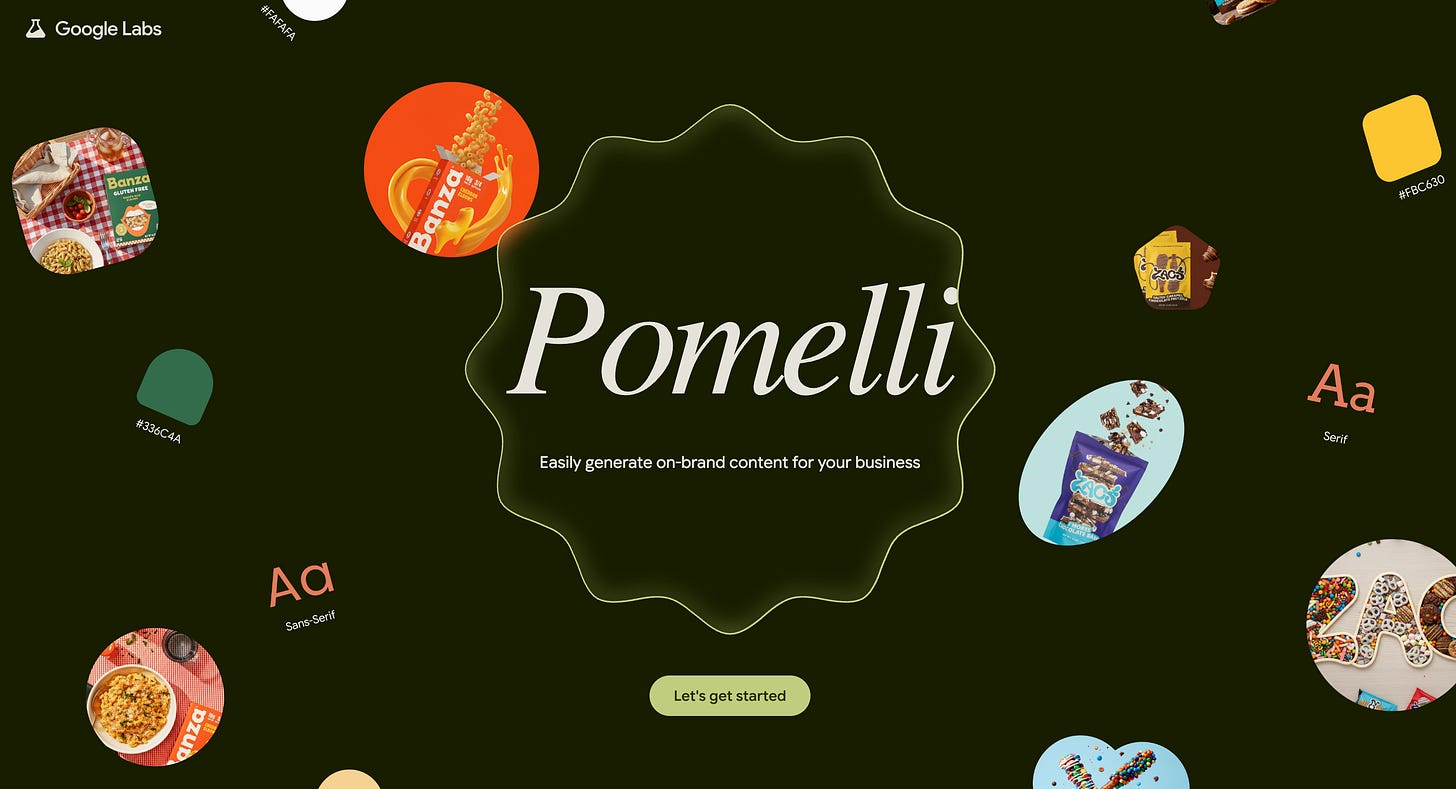Embracing the Success Disaster
Why our recent AI product launch was a chaotic success, and what it means for building in the age of AI.
We launched Pomelli two days ago.
It’s an AI tool designed to help small and medium-sized businesses grow by automatically generating their Business DNA, then creating on-brand campaign ideas and creatives. The goal is to give every business the power of a full marketing team, right at their fingertips.
The launch was something the team had poured everything into. We were excited (and maybe a bit nervous - as most folks are right before a first big launch). The day of the launch, it went live, and we all celebrated…and then, it went down.
This is the story of a “Success Disaster,” and it’s a concept I think every team building in AI needs to add to their vocabulary.
The Problem We’re Solving
There’s so much I know AI can do. Through advanced prompting techniques, prompt chaining, and a deep understanding of how to sequence research with text and image generation, the possibilities are incredible when you have the right tools.
But all of that takes time and expertise to figure out right. And even after you’ve figured it out, it still takes time to apply these techniques each time you want to create something new.
One of the true powers of AI is that we can handle this type of heavy lifting at the application layer - by building end to end products, not just tools. We can build solutions that take all that complexity and package it into something simple and powerful. That’s the entire idea behind Pomelli.
At its core, Pomelli is about understanding a business’s unique DNA so we can help them generate campaigns and creatives that feel authentic. The early feedback has been incredible - it’s clear the idea is resonating…
And this is just the start!
The Anatomy of a Success Disaster
And while we have big ambitions and lots we want to launch, we also wanted to be able to build, publish and listen to our users to get direct feedback on what they wanted. So, we launched.
And at first, it worked.
Then, a lot of people started using it. And it went down. The very success we hoped for - a flood of interested users - was the cause of our first major hiccup. It was a classic Success Disaster.
As the team raced to fix things, they uncovered a few other interesting bugs. For a little while, things just weren’t working. But this is where the story turns.
This is the kind of problem you want to have. The reason things went wrong was because something went incredibly right.
The team worked relentlessly, resolved the issues, and tried to communicate openly on X about the hiccups. When Pomelli came back online, people gave it another try. The feedback we’ve received since has been fantastic and will be invaluable as we shape the roadmap ahead.
The Dangerous Pursuit of a Perfect Launch
When you’re living in the moment of a launch, you spend so much time trying to create the perfect experience. A weight settles over you and the team: everything must go smoothly. If it doesn’t, the whole thing can feel like a disaster.
I remember feeling this way throughout many launches in my early career. But in this era of AI, where the mandate is to move fast, launch fast, and iterate, that mindset is a liability.
It’s okay if there are hiccups.
Things might not roll out with 100% of the polish you imagined. The key is to stay on top of it, fix it, and move on. Don’t dwell on the little things that went wrong. Instead, celebrate what went right.
One of the biggest tensions I see within teams is this strive for perfection before they’re ready to go live. That is not the right mantra for right now when you are building 0 to 1. We need to get things out early to get feedback from the real world.
Here’s a couple ways to enable you to do just that:
Manage expectations with labeling. We launched Pomelli as an experiment. This framing sets expectations for both the team and our users. You could also use terms like “Beta”, “Prototype”, or one of my new favourites, “Concept Edition”.
Be honest with your users. Acknowledge when things are broken, tell them if you’re experiencing hiccups, and confirm if you’re working on fixes. This can build goodwill and make them feel like partners in the development process. You’re trying to get something into their hands early so you can get their signal and build with them.
That’s what we did. And we’re excited to continue building Pomelli with all of the SMBs that are using it.
Consider this a case study: even within Google, sometimes we launch things that might have a few bumps at first. And that is entirely okay. More than anything, I want to make sure the team is fueled by this launch, not discouraged by it. It was a win.
So if “Success Disaster” isn’t part of your product vocabulary yet, I highly encourage you to give it a try. You’ll probably need it.





Congrats on the launch of Pomelli! I tried it myself and love how quickly it pulls a brand together into creative ideas ready to test in the market.
I really appreciate your point about being honest with users and not over-optimizing before launch. A couple of additional thoughts from my experience:
1 - Speed reduces risk. Getting into the market fast helps validate direction early, minimizing the time and cost of building in the wrong direction before you have enough user signal.
2- Transparency should pair with reliability. Labeling a product as experimental sets the right expectations, but it’s also key that what does ship delivers the intended value and can handle real usage. Larger companies can afford repeat tries when things break, but smaller teams only get so many "give us another shot" moments, so ensuring the foundation can scale matters just as much.